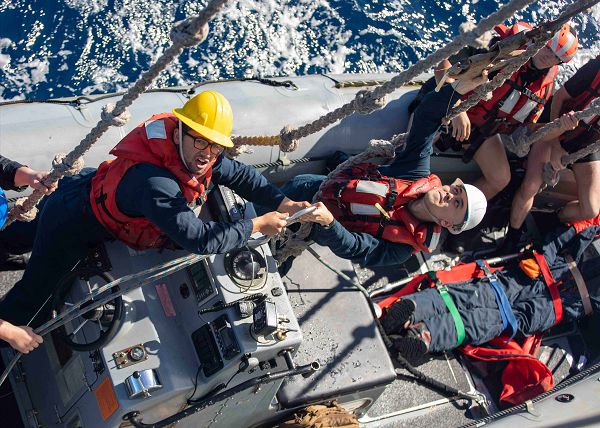
Indian Ocean. (Aug. 4, 2023):In this photo by MC1 Ryre Arciaga, Boatswain's Mate 3rd Class Gabriel Schiazza, from San Diego, California, and Lieutenant Junior Grade Jay Hollister, from Marysville, Washington, connect a quick-release hook to a rigid-hull inflatable boat aboard the Ticonderoga-class guided-missile cruiser USS Antietam. The Antietam and her crew were taking part in Talisman Sabre 23, the largest bilateral military exercise between Australia and the United States of the year.
The Indian Ocean has been a critical trade route for centuries and currently accounts for one-third of the world's bulk cargo traffic and two-thirds of the world's oil shipments. Australia is the lynch pin for allied efforts to protect the free and open transit of these waters by commercial traffic. China has pursued what Beijing calls a “string of pearls” strategy to expand its influence in the Indian Ocean by building ports along its borders. Most of China’s oil flows through the Indian Ocean which is its primary access to Africa and the Middle East.
For these reasons, preventing China or Russia from dominating the Indian Ocean is essential to protecting western interests. To be ready for such a conflict, the U.S. and Australia conduct these annual Sabre exercises to ensure both nations can work together seamlessly should war break out.
This year’s exercise involved amphibious landings, ground force maneuvers, air combat scenarios, and maritime operations.
The United States and Australia have a long history of security cooperation dating back over one hundred years, from World Wars I and II, and every significant conflict since. This year’s Talisman Sabre has more than 30,000 military participants from Australia, United States, Canada, Fiji, France, Germany, Indonesia, Japan, Republic of Korea, New Zealand, Papua New Guinea, Tonga, and United Kingdom.


